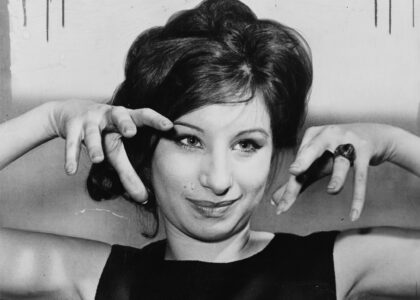A friend of mine started something of a tempest in a teapot on The Twitter Machine the other day, when he expressed the opinion that podcasters should take their craft a little more seriously. Unpopular opinion alert: He’s not wrong.
It would be very easy to assume that this piece is about podcasting. But if you’re a regular reader of The Blog, you’ll already know that I’m a big fan of the things we can learn in one discipline that can easily be applied to others. So stay tuned, because there’s something here for everyone from podcasters to billion-dollar advertisers. My very strong hunch is that my friend, Tanner Campbell – who does a terrific show called Good Morning Podcasters – would love for the current ownership murkiness at Twitter to be over with so their developers could go back to focusing on that “Edit” button that people seem to be clamoring for, because wow did a number of egos appear to be bruised with Tanner’s expression of frustration with something he later admitted could have been worded more elegantly. What was unfortunate that the outrage overshadowed the intent, and the message itself was largely left ignored, and that’s too bad because he was actually on to something.
When I’m working with clients, whether it’s coaching talent, writing a radio commercial or editing and launching a podcast, I’m hyper-conscious of having a solid foundation in the why of virtually everything we do. Why that voice? Why that turn of phrase? Why use the word “obsessed” and not the word “infatuated”? Why that piece of music? Part of me thinks that’s something I picked up in the eight years I was doing stand-up. There are plenty of people in comedy who’ll tell you that a comic should be getting a laugh every ten to twelve seconds. Any longer than that, and the audience is getting bored. So when you’ve got twelve seconds left to say something funny, you become acutely aware that every syllable matters. But mostly, the idea of making the most effective use of words comes from my background as a copywriter. And if you’re new to the show, you probably don’t know that I wrote my first national award-winning radio commercial at the age of fifteen, and got my first job as an ad agency Creative Director three years after that.
Part of my early education as a copywriter involved learning the minutiae of what made the difference between advertising that succeeded, and advertising that failed. (And that’s part of a copywriting course that we’re offering as of the release of this column.) It’s always been my opinion that science forms the base that art rests on. Advertising legend Bill Bernbach said, “Research helps you find out what to say. You owe it to research to say it in a fresh, new way.” But research paves the way for you to get whatever you’re working on, right.
And while I’m a huge fan of… what should we call it… the “democratization” of media, where content generation has come down from the ivory tower and can now be done by anyone that records sound or images, there’s something of a disquieting trend that has surfaced among some of those same content generators, and it’s what I think Tanner might have been trying to shed some light on.
The moment you decide to share a piece of media, whether it’s a song you post on Soundcloud, a photo you post to your Facebook profile, a video on YouTube or a podcast episode, there’s no getting away from your intent: You’re putting something out into the world for others to check out. Even if you’re just putting up a cute photo of your toddler so that Aunt Gretchen in Schenectady can feel like she’s part of the kid’s first steps, you’re putting content out there so someone else can enjoy it. Even in that simple example, you’ve made a deliberate decision to share something that you think Aunt Gretchen will enjoy. To a degree, whether it’s subconscious or not, there’s a touch of research there, so you’d know what specific photo to share. And if she neither clicks “Like”, nor calls your cell to marvel at your little one’s cat-like reflexes, you’ll probably wonder why, because your whole purpose in sharing something was for someone else to consume it.
I had a conversation with a radio station owner who said to me – and this is a quote – “I don’t care what the audience thinks. I want a station that’s programmed for what I want to hear. All the ratings do is periodically tell me how many people are smart enough to agree with me.” Except that’s not broadcasting. That’s an iPod. Mind you, this is the same owner I gave the nickname “The Emperor With No Clothes”, because their entire business model was based on having adoring minions praising them as a quirky genius when in fact, the common thread through the entirety of their career could be displayed with the image of a big fish in a small pond. By always searching out the waters where literally no one else was fishing, this owner had found a way to scrape together the loose change left in the couch cushions by the bigger players in the market, and literally never had to compete head-to-head with anyone else, because nobody wanted the audience this owner was courting.
If you truly don’t care what the audience thinks, there’s no need to share anything. If you don’t care about an audience, write your book in pen on the pages of a lined notebook, and go back and pat yourself on the back for having done the hard work. If you don’t care about an audience, do you really need anything other than the preview screen on your camera to review the footage you just shot? Can’t you just patch your piano into your headphones and play the songs you wrote in the privacy of your bedroom? Couldn’t you have that riveting conversation comparing Star Wars to Star Trek in a phone call?
In over 40 years in the content creation industry, I’ve never met a successful content creator who didn’t care about the audience. Because the truth is, we cast in the hopes of getting a nibble at the other end. Otherwise, everything we work on would just stay on our hard drives.
Hopefully, we got that part resolved once and for all. Now on to the rest of the story.
If we can agree that we put things out into the world for other people to consume, don’t we, at some point, have to consider those other people? I mean, Emperor With No Clothes aside, I think everyone on the planet would have to put that one in the “Duh” column.
To me, that consideration happens twice. And both steps are critical.
First, there’s the consideration of identifying who you’re talking to. If you’re interested in getting into the weeds on how to do this, I’d recommend the eighth piece in this series, called “Don’t Find A Niche”. But I can sum up the reason it’s so important by looking at a tweet I saw from someone last week who was talking about the avatar for their show, and described their target audience as “men between 18 and 55.” To me, that’s not narrow enough. Imagine standing in a room filled with 18-year-old men. Then imagine that room being filled with 55-year-old men. Wouldn’t you talk to those audiences differently? Use different references, turns of phrase, maybe even a different attitude? Now, there are times when you can get away with a broad definition of your audience. Yes, you can absolutely make a movie for superhero comic book fans. But a podcast about superhero movies? There are thousands upon thousands of those already. Put in the work, do the research and figure out what’s going to make yours different.
Second, there’s reviewing what you’re doing to see if it’s working. That’s where things you’ve heard about like “A/B testing” come in, where there are two versions of an ad that are only different from each other in one minor way so the creators of the ad can figure out what’s working and what isn’t. There are movies that have been pulled and completely rewritten because of the reaction of the audience at a preview screening. Does the audience for your radio station drop off sharply every day at noon? So go back and look at what happens at noon, and stop doing that thing. Or at least find a way to improve it so as to minimize the damage.
And that’s where some more egos may have been bruised, by something I tossed in to the conversation. The state of play for most podcasts right now is that ad rates for pre-roll ads at the beginning of an episode are higher than mid-roll ads that show up halfway through, and mid-roll rates are higher than post-roll rates for ads that play when most or all of the content is over. That data seems to just have been accepted as a fact of life by a startling number of podcasters; and plenty don’t even check to see their audience numbers over the course of an episode.
Look, if half the audience had walked out of a movie by the halfway point, we’d assume the movie was terrible. If you gave up on a book with 60 pages left, it’s safe to assume you lost interest in what you were reading – or, more accurately, that the book failed to keep you interested. But for some reason, in the podcast world, the audience giving up on you halfway through has, in some circles, just become accepted as a thing that listeners do. Look, the Marvel movies have figured out a way to get people to sit all the way through to the end credits, by popping up bonus scenes and content that doesn’t come up until the last name has scrolled by. The TV series 24 used to keep people riveted to the screen through the end of the credits by giving viewers a really compelling sneak peek at next week’s episode. So don’t tell me it can’t be done; it just means someone hasn’t done the work of making it happen.
Let’s stop normalizing mediocrity. If people are skipping through your content – whether that’s your podcast episode, your book, or your ads on YouTube – it means they’re not interested. And isn’t that why you released your content in the first place? To make it available for someone who’d find it interesting?
YouTube is actually a terrific example of this idea. the very existence of a “Skip Ads” button and the LACK of a “Play Ad Again” button puts out a giant neon sign to the users that says, “What you’re about to see isn’t worth watching.”
For crying out loud, fix it.






